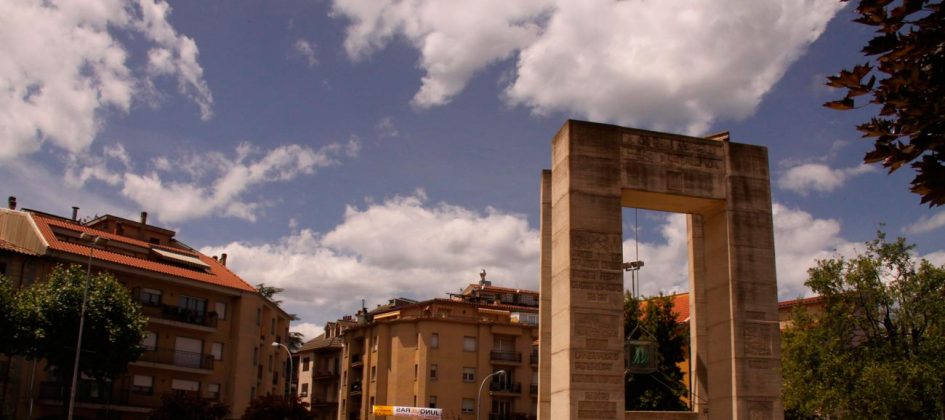General Moragues’ monument
This square is dedicated to Josep Moragues i Mas, a historical figure born in 1669 in Mas Moragues, in Sant Hilari Sacalm. He was a military man who fought for the Austrian side in the War of the Spanish Succession. In the square, there is a monument dedicated to him by Domènec Fita.

THE SQUARE
Sant Hilari’s town council thought it was appropriate to dedicate a monument to the figure of Josep Moragues, known as General Moragues, a distinguished son of the town and a hero of the War of the Spanish Succession (1702-1714), with tragic consequences for Catalonia.
Josep Moragues square has become an important space for the inhabitants, according to the new reality and Sant Hilari’s urban appearance.
For all of us, a meeting point, a recreation area in the middle of the town. It becomes, however, an emblematic place for all those, from here or abroad, who see Josep Moragues as a symbol of the fight for Catalonia’s freedom.
The architectural ensemble of the square is the work by the architect Jordi Roca i Casademont.
THE MONUMENT
The artist from Girona wanted to represent what he thought of Moragues’s figure and also to magnify and dignify his life and work, since he who fought and died trying to make Catalan people free.
His work highlights that the General died in Barcelona, at Portal del Mar, and that his head was hung in a cage for 12 years. The architect had two main historical reasons for creating the work: the 11th September 1714, because it meant Catalonia’s loss of rights and freedom, and since it was considered necessary to make him an emblem for our national holiday. The idea aims to represent the symbol of the vile and ignominious cross of the Christianity, which is born from the mockery and the humiliation towards Christ. He chose a door and a cage to make the monument a glorious exaltation.
The author wants to emphasise two primordial aspects of his life: as a hero of Catalonia –since no one else fought as much as he did against the destruction of the rights– and because he was from Sant Hilari -he spent his childhood and his youth here- and also some time in Vic, where he reaffirmed his dedication to the fight for the freedom of Catalan people. This led him to conceive two doors: a heavy and real one which is laid on the ground and it is the one Catalonia erects in his honour, and a second one, the one Sant Hilari offers to his son, has four legs facing up, like two arms acclaiming him and spiritualizing the fact.
The doors have engraved reliefs which refer to the connection between General Moragues, Sant Hilari and Catalonia. At the first door, you can see Mas Moragues, with Josep Moragues being a farmer and the chapel of the Pact of Sant Sebastià. The engravings of the Catalan door allude to the generic question of the War of the Spanish Succession, when he was the governor of Castellciutat, to the capitulation of this fortress and the surrender on the 11th September 1714.
The proportions are considerable because the author wanted the monument to be visible just by entering the town. The doors are 9 metres high and 6 metres wide. One of the doors is 150 cm thick and the other, 75 cm.
For further information about General Moragues.
